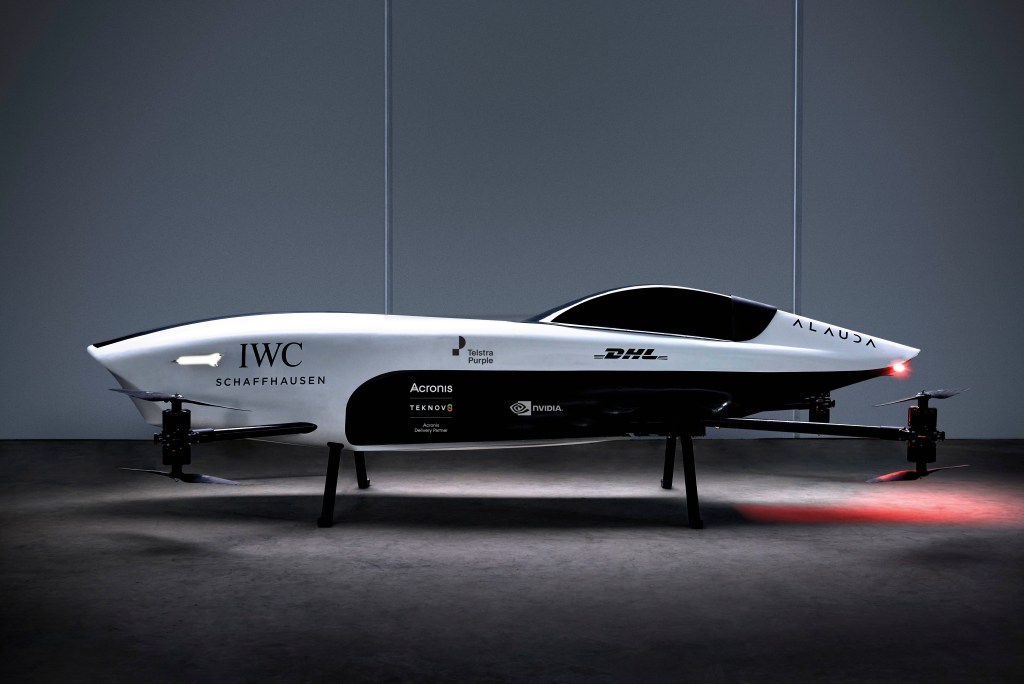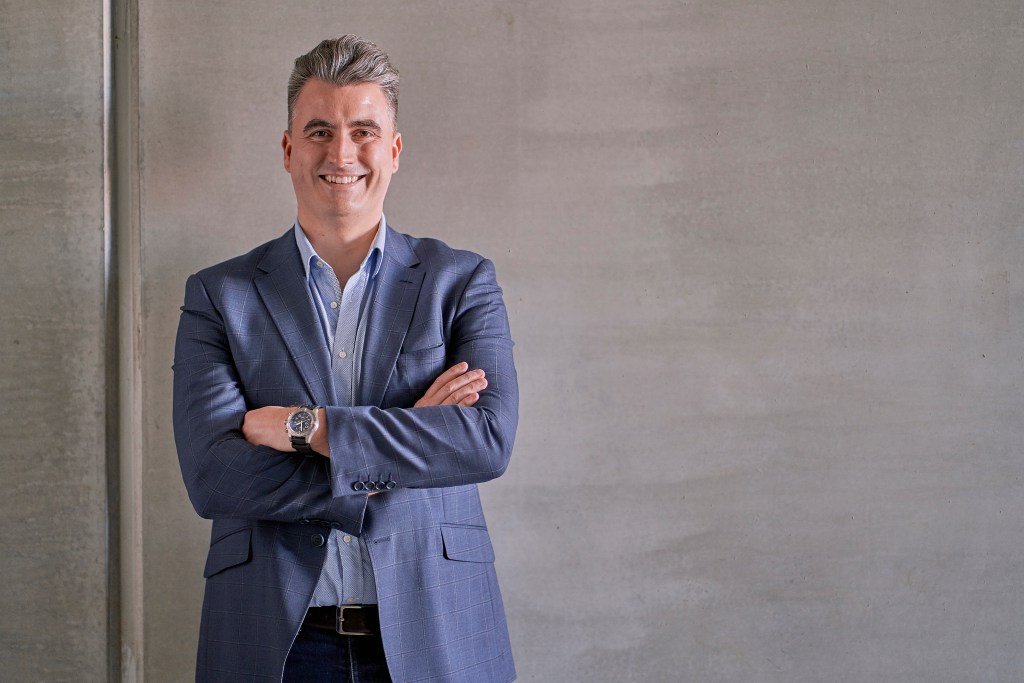Meet Matt Pearson, a man who has a dream to make flying cars a reality for all of us – but what better place to trial the concept than a racetrack in the sky. His theory: competition drives progress.
Key Takeaways
- Pearson founded Alauda in 2016 with a dream to build performance electric vertical take-off and landing (eVTOL) aircrafts
- Pearson’s enlisted an all-star team, with talent from Airbus, Boeing, Ferrari, McLaren and Rolls-Royce
- The dream is to make flying cars fit for the mass market.

Picture this: Racing cars with high powered propellers hover six to 10 metres off the ground, reaching speeds of 150 kilometres per hour.
Instead of having drivers, they’re controlled remotely by pilots on the ground. Pilots like motor sport royalty Bruno Senna, or drone racer Lexie Janson. Instead of overtaking like their land-based predecessors, they fly above or below each other; pit stops are used to change batteries – not tyres and drivers.
“This could be a $100 billion Tesla of the sky.”
– Matt Pearson, founder of Alauda Aeroautics
This is Alauda Aeronautics founder Matt Pearson’s dream-turned-reality. “I wanted to build a flying car,” Pearson, says. So he did.
Pearson founded Alauda in 2016 with a dream to build performance electric vertical take-off and landing (eVTOL) aircrafts. Four years later, he set up the world’s first electric flying car factory in South Australia and created the world’s first eVTOL racing series: Airspeeder.
Of course, the end goal is to build a flying vehicle for the mass market. But as Pearson says, history shows the evolution of transport often started with racing. “Competition drives progress better than anything else,” Pearson says.“ The first cars weren’t taxis, the first planes weren’t for passengers. Racing just makes sense from a historical standpoint.”
To see this through, Pearson’s enlisted an all-star team, with talent from Airbus, Boeing, Ferrari, McLaren and Rolls-Royce. Some staff also have a military operations background – and we weren’t kidding about Senna and Janson joining the team.

To refine the product, Airspeeder races its own fleet in the event it created: the EXA Series.
“There’s no reason that in 20 years, this couldn’t be the biggest motorsport in the world. Our goal is to replace Formula 1 – it’s everything they have, but it’s three dimensions,” Pearson says.
They’re not cheap, though. In terms of materials, one vehicle costs hundreds of thousands of dollars. Add the engineering time to the mix and it ends up being in the millions. Among Airspeeder’s sponsors are NVIDA, Telstra Purple and IWC Schaffhausen. It’s taken on private investment, too.
“The first pool of funding was investors who saw that big vision and understood that this was a clever pathway to mass-market,” he says. “But, there’s a chance that the regulations get there and the batteries get there, and people actually want these things… Then, this could be a $100 billion Tesla of the sky.”